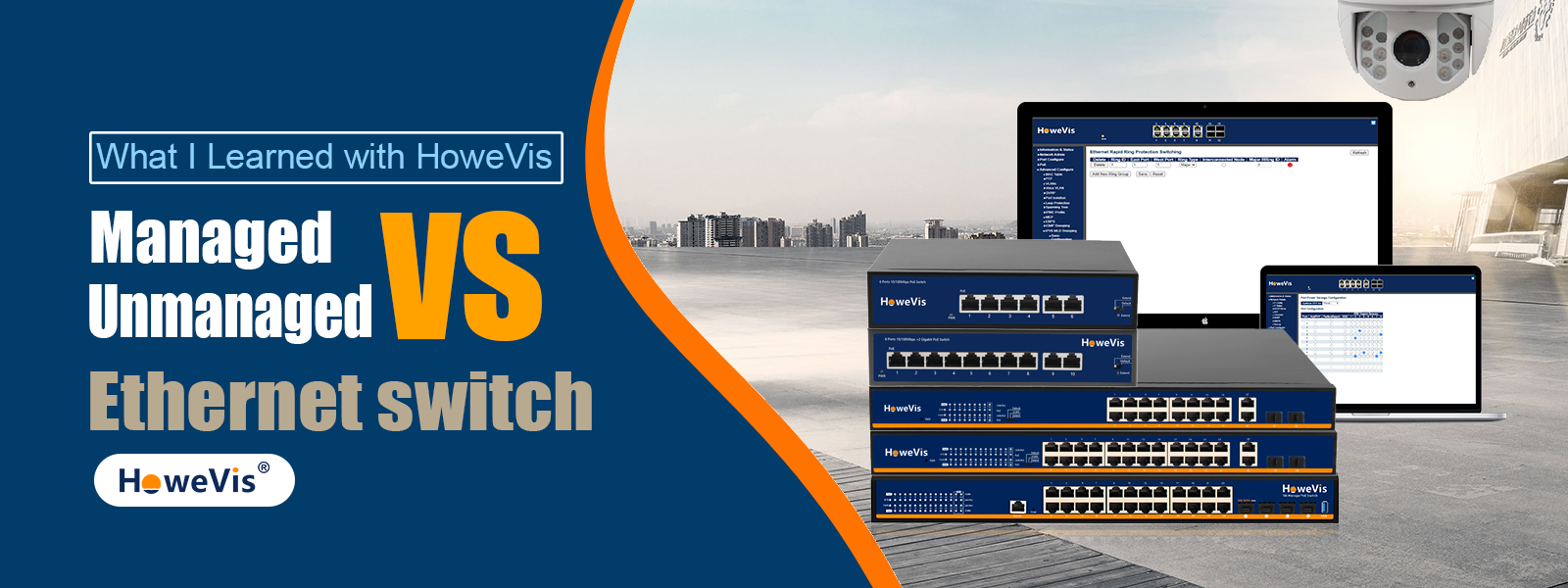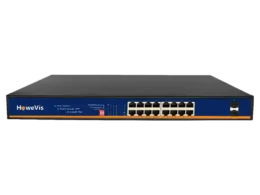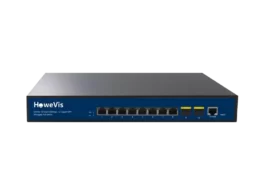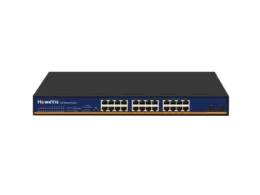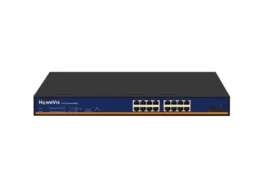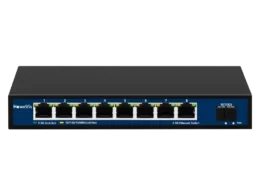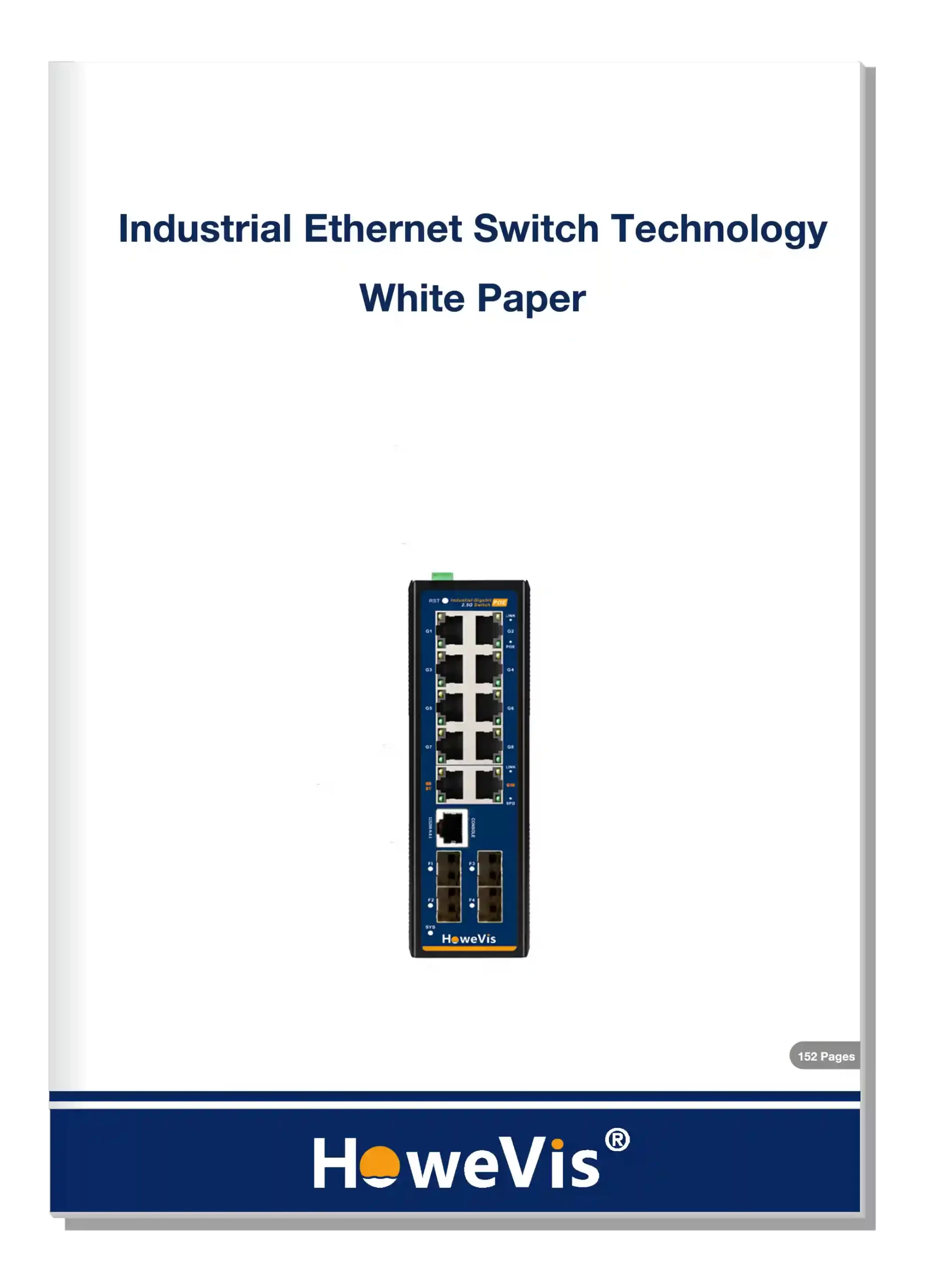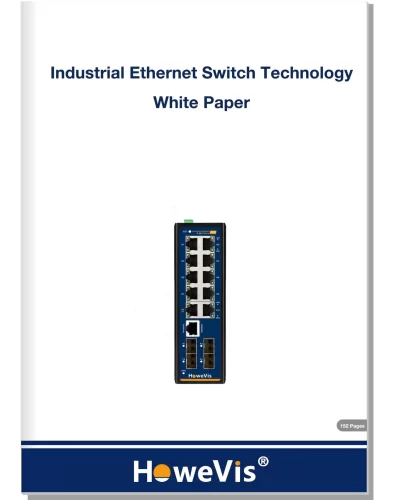When choosing between managed and unmanaged switches, Do you also face the following worries?
| Complexity vs. Simplicity – Managed switches offer advanced control (VLANs, QoS, security), but require IT expertise to configure and maintain. Unmanaged switches are plug-and-play but lack customization, creating scalability issues as networks grow. |
| Security Risks – Unmanaged switches provide no traffic monitoring or access controls, raising concerns for industries like manufacturing or healthcare with sensitive data. Managed switches solve this but increase setup overhead. |
| Hidden Costs – While unmanaged switches are cheaper upfront, limited troubleshooting tools can lead to costly downtime. Managed switches reduce long-term risks but demand training and higher initial investment. |
| Future-Proofing – Businesses fear outgrowing unmanaged switches, forcing expensive upgrades. HoweVis’ smart switches offer a middle ground with basic management at lower complexity. |
Now let’s follow the engineers at HoweVis and learn how to differentiate and select Managed or Unmanaged Switches: What I Learned with HoweVis.
The Two Types of Switches
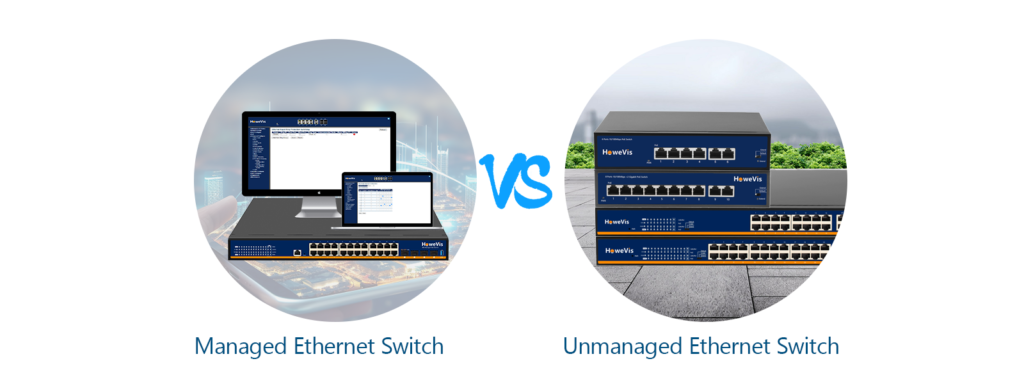
A network switch connects devices in a LAN for quick data sharing. HoweVis offers switches with 5 to over 52 ports, perfect for homes or big offices. Most are fixed, meaning you get a set number of ports and features. They come in unmanaged, smart, or managed types, each with different control and cost levels.
The Unmanaged Switch
- Plug-and-play, no setup needed
- No fancy controls or interface
- Basic LED lights for power and activity
- Comes in 5, 8, 16, 24 or 48 ports
- Great for homes or small offices
HoweVis unmanaged switches are super easy. As a manufacturer, HoweVis builds them to just work. Plug them in, connect your devices like laptops or printers, and you’re good. They handle basic Layer 2 switching for sharing files or internet. No passwords or settings to mess with. See HoweVis’s unmanaged switches for simple solutions.
But they don’t offer much control. I can’t set up VLANs or check traffic. They’re great for quick, reliable connections in small setups. For homes or tiny offices, HoweVis unmanaged switches are affordable and easy. If my network grows, I look at HoweVis’s managed or smart switches.
The Managed Switch
HoweVis managed switches let me tweak my network, monitor traffic, and keep things secure. I can use a web dashboard or command line to manage them. They support VLANs to split traffic, QoS to prioritize video calls, and ACLs to control access. Port mirroring helps me spot issues. Learn more about VLANs from Cisco’s VLAN guide.
HoweVis also has smart switches, which offer some control like basic VLANs without being too complex. For big setups with servers or access points, HoweVis managed switches use protocols like VRRP or Spanning Tree to keep things running if something fails. Check out HoweVis’s managed switches for bigger networks.
Managed switches cost more but are worth it for complex setups. They keep my network fast, safe, and ready to grow, all thanks to HoweVis’s quality manufacturing.
Managed vs. Unmanaged: A Quick Breakdown
HoweVis managed and unmanaged switches differ in more than just ports. I look at control, performance, security, growth, and cost when choosing for small or large networks.

1. Control
HoweVis managed switches let me adjust and monitor everything. I can set up VLANs, prioritize traffic, or limit access with ACLs. This is great for networks with servers, Wi-Fi access points, or lots of users. It makes troubleshooting easier. Read more about network management on Juniper’s guide.
HoweVis unmanaged switches are ready to go out of the box. They handle data automatically but don’t let me tweak settings. They’re simple but less flexible.
2. Performance
HoweVis managed switches boost performance with QoS to prioritize important data like video. Link aggregation combines ports for more speed, great for busy networks. Unmanaged switches work for small setups but can slow down with heavy traffic since I can’t prioritize anything.
3. Security
HoweVis managed switches offer 802.1X authentication, port security, and private VLANs to keep data safe. SNMP monitoring spots issues fast, and encryption protects sensitive info. Check out network security tips from Palo Alto Networks’ guide.
Unmanaged switches don’t have these features, so they’re not great for sensitive data. HoweVis suggests managed switches for businesses needing security.
4. Scalability
HoweVis managed switches grow with my network. They support mesh setups and VLANs for adding devices easily. Unmanaged switches are fine for a few devices but struggle with larger setups. HoweVis managed switches mean less hassle as I expand.
5. Cost
HoweVis unmanaged switches are budget-friendly. Managed switches cost more, but offer security and growth. I also think about setup and maintenance costs. See HoweVis’s pricing guide for more.
Making the Right Choice

I pick between HoweVis managed and unmanaged switches based on my network’s size and needs. Here’s how I decide.
| No Tech Skills: HoweVis unmanaged switches are plug-and-play, perfect for beginners. |
| Some Know-How: HoweVis managed switches let me tweak VLANs and security. |
| Big Networks: Managed switches handle complex setups like Spanning Tree. |
| Future Growth: HoweVis managed switches make adding devices easy. |
-
24 Ports 10/100/1000Base-TX Unmanaged AI PoE Switch with 2xGigabit SFP
-
16 Ports 10/100/1000Base-TX Unmanaged AI PoE Switch with 2xGigabit SFP
-
8 Ports Gigabit Managed PoE Switch with 2 Ports Gigabit SFP
-
24 Ports 2.5gb Ethernet Switches with 2 Ports 10G
-
16 Ports 2.5gb Ethernet Switches with 2 Ports 10G
-
8 Ports 2.5G Enterprise Ethernet Switch with 10G SFP+
Home Networks
For homes, HoweVis unmanaged switches are great for connecting a router, TV, or console. If I want QoS for gaming or VLANs for guest Wi-Fi, HoweVis smart switches are a good fit.
Small Businesses
For small businesses, I check how many devices I have now and later. HoweVis unmanaged switches work for simple setups. If I need control or monitoring, managed switches are better. See HoweVis’s small business solutions.
Large Enterprises
Big companies need HoweVis managed switches for tons of devices. They offer port security and redundancy to keep things running. Check out HoweVis’s enterprise solutions.
Special Setups
For factories or events, HoweVis managed switches give tight control. For small projects, unmanaged switches are enough. Contact HoweVis Support for help picking.
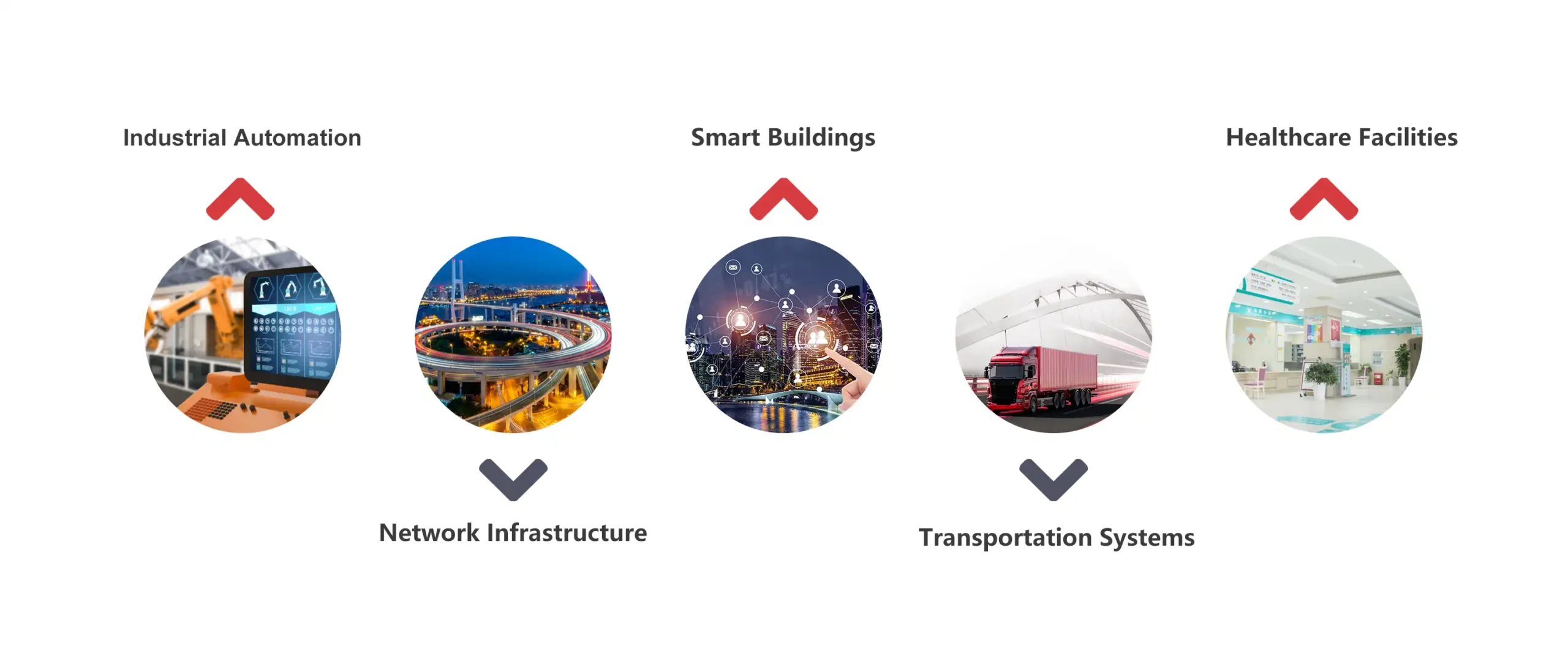
The Middle Ground
HoweVis smart switches and PoE switches are great when I need some control without going all-in.
Smart Switches
HoweVis smart switches let me set up VLANs or check traffic without needing to be a tech wizard. They’re perfect for small offices or homes and cost less than managed switches. See HoweVis’s smart switches.
PoE Switches
HoweVis PoE switches send power and data through one cable, great for IP cameras or VoIP phones. A 16-port PoE switch works for medium projects, while 8-port is good for small ones. Check out HoweVis’s PoE switches.
Hidden Costs
The price of a HoweVis switch is just the start. I also think about setup, upkeep, and skills needed.
Implementation
HoweVis managed switches need time to set up VLANs or QoS. They might use more power (150–750 watts) and have fans, adding costs. Unmanaged switches are quick to plug in but don’t scale well.
Maintenance
Managed switches need updates and checks, especially for PoE devices using up to 7W per port. HoweVis unmanaged switches are low-maintenance but may fail in busy setups, causing downtime.
Expertise
HoweVis managed switches need tech know-how, which might mean training or hiring. Unmanaged switches are easy for anyone to use, saving on training.
The Big Picture
- Long-term costs can beat short-term savings.
- Skills, power, and hardware affect my budget.
- Maintenance and growth matter for my network.
Beyond the Switch
A switch is just one part of my network. HoweVis switches work with routers, access points, and servers for a fast, reliable setup.
The Role of Routers
Routers guide data between networks. HoweVis switches handle local traffic. I make sure my router supports 10Gbit Ethernet or link aggregation to match my switch. See HoweVis’s networking solutions.
The Legacy of Hubs
Old hubs sent data everywhere, slowing things down. HoweVis switches send data only where it’s needed, making networks faster. Managed switches add VLANs and monitoring for modern needs.
Compatibility and Optimization
HoweVis switches work with PoE devices and support link aggregation for speed. Managed switches let me monitor traffic and set rules for better performance.
Scalability and Flexibility
HoweVis multi-switch setups support QoS and 10Gbit ports, making it easy to add devices as I grow.
Frequently Asked Questions
What is the main difference between a managed and unmanaged Ethernet switch?
I see that managed switches allow me to customize and monitor my network, while unmanaged switches just work without any fuss. Managed switches provide additional functionality, but unmanaged are easier and are frequently cheaper.
When should I choose a managed Ethernet switch?
I select a managed switch when I require advanced control, security, and network monitoring. If your network expands or requires debugging, a managed switch is critical to optimizing your operations and maintaining flexibility going forward.
Are unmanaged Ethernet switches secure enough for business?
From what I’ve used, unmanaged switches don’t have any good security features. For small offices or home, they could be sufficient. For business networks with sensitive data, I suggest managed switches for added security.
Do managed switches require special skills to set up?
Yes, I need some networking knowhow to setup a managed switch. They have VLAN, monitoring, and security settings. If I’m not networking savvy, I may require assistance from an IT specialist.
Can I mix managed and unmanaged switches in one network?
Yes, I can mix and match the two on the same network. I typically extend managed switches with unmanaged switches for less complicated devices. I keep the heart of my network managed.
What are the hidden costs of unmanaged switches?
Although unmanaged switches are less expensive initially, I understand they can result in greater expenses down the line. Troubleshooting, lack of control and poor scalability might end up costing me more time and money as my network expands.
How do switches fit into my entire network ecosystem?
Switches are the bread and butter of my network. They link devices and control traffic. My decision between managed and unmanaged switches impacts network performance, security, and scalability.
